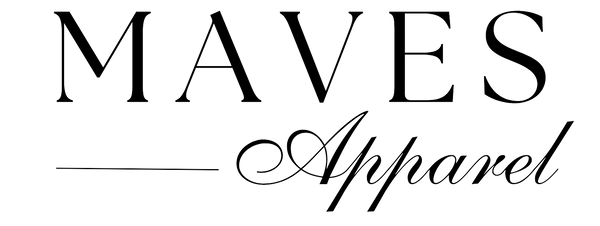
The Evolution of USA Fashion: A Timeline
Share
Fashion in the USA has always been a reflection of the cultural, social, and political changes that have taken place throughout its history. From the early settlers in the 1600s to the present day, fashion trends have been shaped by the changing lifestyles, economic conditions, and technological advancements of the times. In this article, we will take a look at the evolution of USA fashion over the centuries and explore the defining trends that have shaped the industry.
Introduction: The Influence of Fashion on American Culture
Fashion has always played a significant role in American culture. It has been a symbol of social status, personal expression, and cultural identity. American fashion has been influenced by the diverse cultural backgrounds of its people, including Native American, African American, European, and Asian immigrants. Fashion trends have also been shaped by the changing roles and expectations of men and women throughout history.
Early Settlers and Colonial Fashion
When the first settlers arrived in America in the 1600s, they brought with them the clothing styles of their home countries. The early colonists wore clothing made of natural fibers such as wool, linen, and leather. The clothing was simple and practical, designed for survival in a new land. Colonial fashion was heavily influenced by European styles, with men wearing knee-length breeches, stockings, and coats, while women wore long dresses with high collars and full skirts.
The 1800s: Expansion and Industrialization
The 1800s were a time of expansion and industrialization in America, and fashion trends reflected these changes. The rise of the middle class led to increased demand for clothing, and the development of new manufacturing techniques made it easier and cheaper to produce textiles. Women's fashion saw the introduction of the corset, which was designed to create an hourglass figure, and the hoop skirt, which made skirts wider and more voluminous.
The Roaring Twenties: Flappers and Jazz Age Fashion
The 1920s were a time of social and cultural change, and fashion was no exception. The rise of jazz music and the flapper culture led to a new style of clothing that was more relaxed and informal. Women's clothing became shorter, looser, and more comfortable, with the introduction of the "flapper dress" and the iconic cloche hat. Men's fashion saw the rise of the "Oxford bag" trouser and the double-breasted suit.
The Post-War Era: Hollywood Glamour and Rock n' Roll
The post-war era saw a return to glamour and elegance in fashion. Hollywood stars such as Marilyn Monroe and Audrey Hepburn became fashion icons, and their style influenced women's fashion around the world. Men's fashion saw the rise of the "greaser" style, inspired by rock n' roll and rebellion.
The 1960s and 70s: Hippie Chic and Counterculture Fashion
The 1960s and 70s were a time of social and political upheaval, and fashion reflected these changes. The hippie movement embraced a more natural and bohemian style, with tie-dye, fringe, and bell-bottoms becoming popular. Women's fashion saw the introduction of the miniskirt and the maxi dress, while men's fashion saw the rise of the Nehru jacket and the platform shoe.
The 1980s: Power Dressing and Consumerism
The 1980s were a time of excess and consumerism, and fashion trends reflected this. Women's fashion saw the rise of "power dressing," with shoulder pads and business suits becoming popular. Men's fashion saw the introduction of the preppy look, with polo shirts, khaki pants, and boat shoes becoming popular.
The 1990s: Grunge and Minimalism
The 1990s saw a rejection of the excess and consumerism of the 80s, with fashion becoming more minimal and understated. The grunge movement, popularized by bands like Nirvana and Pearl Jam, embraced a casual and disheveled style, with ripped jeans, flannel shirts, and combat boots becoming popular. Minimalism also became popular, with designers like Calvin Klein and Jil Sander promoting simple, clean lines and neutral colors.
The 2000s: Streetwear and Athleisure
The 2000s saw the rise of streetwear and athleisure, with clothing becoming more casual and comfortable. Brands like Nike and Adidas became popular for their stylish and functional athletic wear, while streetwear brands like Supreme and A Bathing Ape gained a cult following. Celebrity fashion also became more influential, with stars like Beyoncé and Rihanna setting trends with their bold and daring styles.
The Present Day: Sustainability and Diversity
Today, fashion is more diverse and inclusive than ever before. With social media and online shopping, fashion trends are constantly changing and evolving. Sustainability and ethical fashion have become important issues, with many brands focusing on environmentally friendly materials and fair labor practices. Diversity and representation have also become a key focus, with designers and brands embracing models of all sizes, races, and genders.
Conclusion: The Future of USA Fashion
The evolution of USA fashion has been shaped by many factors, including culture, politics, and technology. As we move into the future, it is clear that sustainability, diversity, and inclusivity will continue to be important issues in the fashion industry. With new technologies and changing cultural norms, it will be interesting to see how fashion continues to evolve and adapt to the times.
FAQs
-
What is the most iconic American fashion trend? A: There have been many iconic American fashion trends throughout history, but the flapper dress of the 1920s and the Levi's jeans are two of the most enduring.
-
How has technology influenced USA fashion? A: Technology has influenced USA fashion in many ways, from the development of new materials and manufacturing techniques to the rise of online shopping and social media influencers.
-
Why is sustainability important in the fashion industry? A: The fashion industry is one of the largest polluters in the world, and sustainable practices are necessary to reduce its impact on the environment and ensure fair labor practices.
-
What is athleisure? A: Athleisure is a style of clothing that combines athletic wear with casual wear, designed to be comfortable and functional for everyday wear.
-
How has diversity influenced USA fashion? A: Diversity has influenced USA fashion by promoting more inclusive and representative models, designers, and brands that cater to a wider range of sizes, races, and genders.
